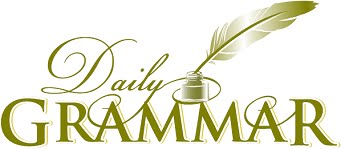A verbal is a verb form used as some other part of speech. There are
three kinds of verbals: gerunds, participles, and infinitives.
A gerund always ends in ing and is used as a noun.
Example:
Eating is fun.
A participle is used as an adjective and ends various ways. A present
participle always ends with ing as does the gerund, but remember that it is an adjective. A past participle ends with ed, n, or irregularly.
Examples:
played, broken, brought, sung, seeing, having seen, being seen, seen, having
been seen
An infinitive is to plus a verb form. It can be a noun,
an adjective, or an adverb.
Examples:
to be, to see, to be seen, to be eaten
Instructions: Find the
gerunds, gerund phrases, participles, participial phrases, infinitives,
or infinitive phrases in these sentences, tell what kind of verbal they
are, and how they are used.
1. Signs hung too high can't be read.
2. You know my weakness, eating late at night.
3. Your weeping and wailing will not change a thing.
4. To decorate for the dance will cost too much.
5. Do you have a book to read?
--For answers scroll
down.
Answers:
1. Signs hung too high can't be read.
- hung too high (participial phrase) modifying the subject Signs
2. You know my weakness, eating late at night.
- eating late at night (gerund phrase) used as an appositive
3. Your weeping and wailing will not change a thing.
- weeping/wailing (gerunds) used as subjects
4. To decorate for the dance will cost too much.
- to decorate for the dance (noun infinitive phrase) used as the subject
5. Do you have a book to read?
- to read (adverb infinitive) modifying the verb Do have
For your convenience, all of our lessons are available on our website in our lesson archive. Our lessons are also available to purchase in an eBook and a workbook format.







No comments:
Post a Comment